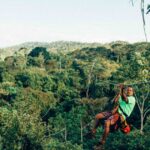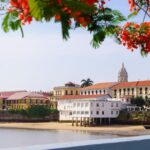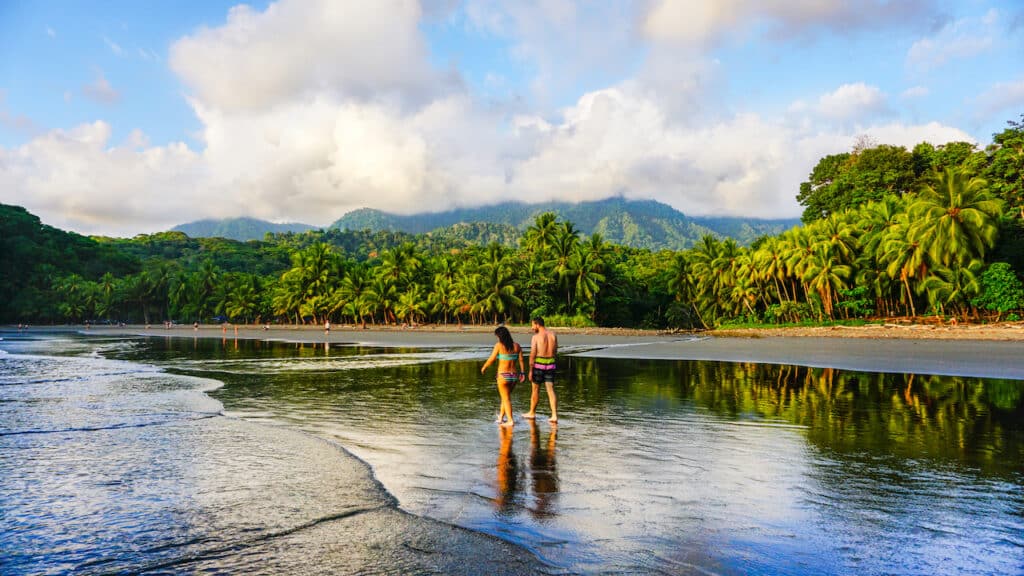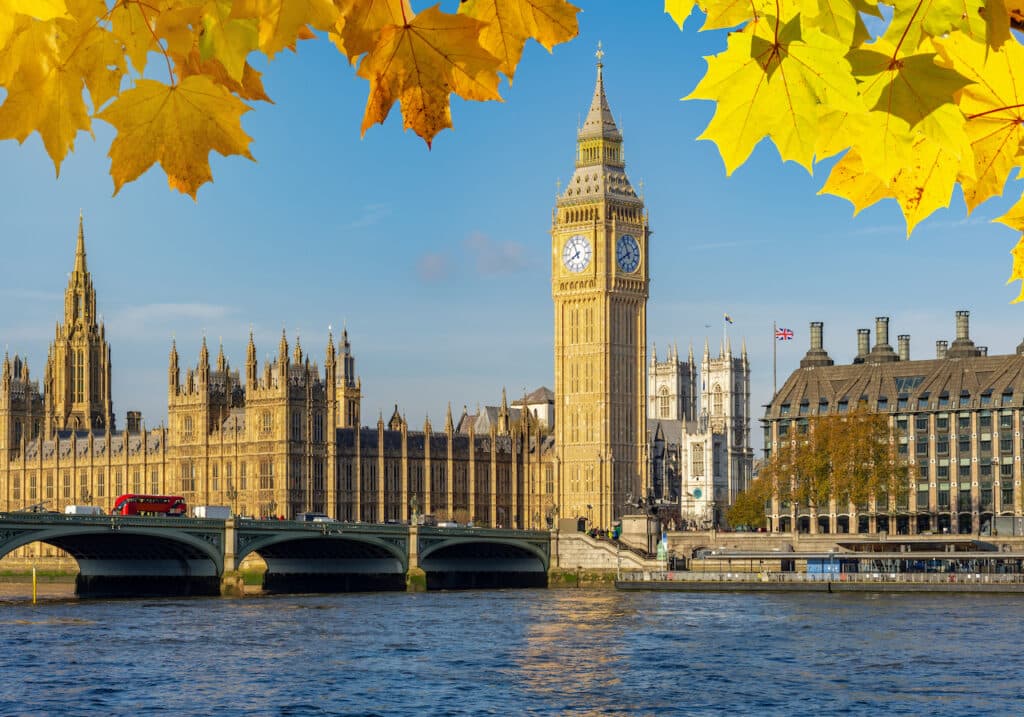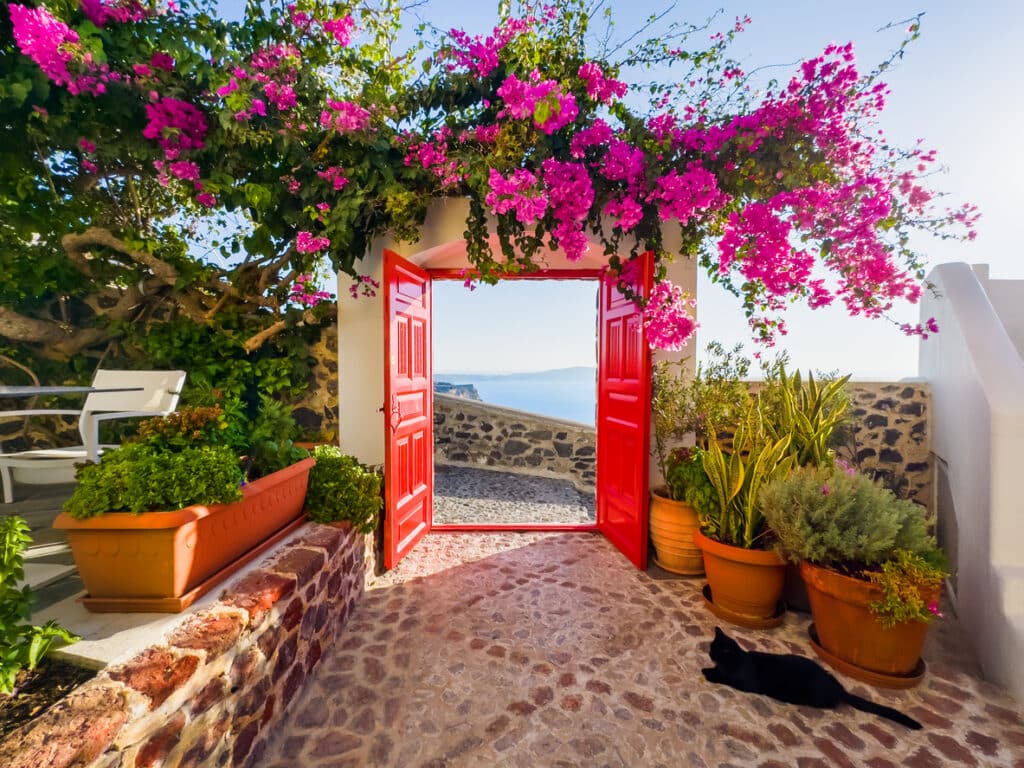Dreaming of a workspace with sun-kissed beaches on one side and a vibrant, diverse culture on the other? The Panama Digital Nomad Visa, launched in 2021, is your ticket to just that. This visa allows professionals to immerse in the country’s beauty, all while working remotely.
Historically a haven for American retirees, Panama is now emerging as a budding hub for digital nomads, thanks to its safety, proximity to the US, and the recent boom in remote work. But before you pack your bags and laptop, let’s dive into eligibility, requirements, and the application process for this enticing location to call your home away from home.
Ready to embark on this tropical journey?
Snapshot of expat life in Panama
- Population: 4.35 million
- Capital city: Panama City
- Currency: Panamanian Balboa, US Dollar
- Official language(s): Spanish
- Approximate number of American expats: 20,000-30,000
Navigating Panama digital nomad visa options for US remote workers
Whether you’re looking for a short-term escapade or considering a more permanent move, Panama offers a range of visa options tailored to your needs. Let’s delve into the two most popular choices for digital nomads.
Short-Stay Visa for Remote Workers: Your temporary tropical office
The Short-Stay Visa for Remote Workers, popularly known as the digital nomad visa, is the prime choice for American expats eyeing a stint in Panama. Designed to promote tourism while accommodating the telecommuting wave, this visa is a short-term solution, ensuring you soak in Panama’s beauty without the commitment of long-term immigration.
Friendly Nations Visa: A step closer to permanent paradise
For those envisioning a longer stay, the Friendly Nations Visa emerges as a compelling option. Tailored for residents of 50 countries, including the US, with whom Panama shares robust ties, this business visa not only allows you to work but also paves the way for permanent residence. However, it does come with its prerequisites. To qualify, one must either invest in Panamanian real estate with a value of $200,000 USD or more or secure a legal work contract with a Panama-based company.
Your step-by-step guide to become a digital nomad in Panama
It’s an ironic truth that for all the whimsy and spontaneity inherent in travel, there’s also a significant amount of administrative organization. Below we dive into everything you need to know for a successful application for the Panama digital nomad visa.
Are you the right fit? Checking your application eligibility
Initial requirements include that you:
- Earn at least $36,000 USD annually (or $3,000 monthly).
- Have the capability to work remotely.
- Hold a valid contract with a foreign entity (not based in Panama).
Permitted activities and work restrictions
With the digital nomad visa, you can bask in Panama’s beauty while working remotely. However, there are a couple of permitted activities and work restrictions to keep in mind:
- No working for Panamanian companies. (For that, consider the Friendly Nations Visa).
- This visa is a solo journey; no dependents are allowed.
- It’s a temporary stay; no direct path to permanent residency.
Application materials
Embarking on your Panamanian digital nomad journey requires a bit of paperwork. Here’s your comprehensive checklist to ensure you’re well-prepared:
- Passport: Ensure it’s valid for at least six months beyond your application date.
- Photos: Have three passport-sized photos ready.
- Application Form: Fill out the Short Stay Visa application form.
- Background Check: A clean slate is essential. Head to your local police station to get an apostilled criminal background check.
- Health Check: A health certificate from a doctor, confirming you’re fit for the adventure.
- Insurance: Secure a health insurance policy covering your entire stay in Panama.
- Company Verification: Proof of your association with a foreign company.
- Income Proof: Two options here:
- An apostilled bank certification letter detailing your income sources.
- The last two months of bank statements, stamped, sealed, and apostilled.
- Employment Proof: Depending on your work status:
- Employees: A letter from your employer detailing your role, responsibilities, income, and remote work capability.
- Self-Employed: A notarized affidavit outlining client details, services, and earnings.
- Work Declaration: Secure an affidavit confirming your commitment to not accepting any local jobs in Panama. Typically, you can obtain this “Affidavit of Non-Acceptance of Jobs in Panama” from your local courtroom. This document emphasizes that your professional endeavors are tied exclusively to foreign entities outside of Panama’s borders.
- Legal Representation: An application form and a notarized power of attorney form.
- Fees: Ready $250 for the application and an additional $50 for visa issuance.
Remember, while the list might seem extensive, each document is a step closer to your tropical remote work dream in Panama.
🧐 Heads up:
Panama currently requires a legal representative to file the digital nomad visa application on your behalf. Make sure you plan accordingly for timing & cost to hire help!
Application process
To apply for Panama’s digital nomad visa, you must:
- Embassy or Consulate Appointment: Begin your journey by scheduling an appointment with the nearest Panamanian embassy or consulate.
- Document Preparation: Assemble all the necessary documents as outlined in the “Application Materials” section.
- In-Person Submission: Attend your scheduled appointment, where you’ll need to physically submit the relevant documents.
- Fee Payment: At this stage, you’ll pay the $250 application fee to the National Immigration Agency and the $50 Visa Card fee.
- Anticipate Approval: Typically, the approval process takes around 30 days. However, this duration might vary based on the completeness of your application and the volume of applications the agency is handling.
- Pack Your Bags: Once you receive the green light, it’s time to pack up and embark on your Panamanian adventure!
Digital Nomad Portal (Coming Soon!):
It's worth noting that the Panama immigration office is in the process of developing an online portal to streamline the digital nomad visa application process. This will make future applications more convenient!
Visa duration
Panama’s digital nomad visa lasts for nine months and may be extended once for a total of 18 months.
Where to live in Panama
There are plenty of great places for American expats to live in Panama. While some of these were originally known as retirement destinations, the recent influx of young professionals has made them great options for digital nomads who are active in their careers as well.
Here’s our pick for the top three locations for digital nomads:
📍 Panama City: The urban pulse
For those who thrive in the heartbeat of a metropolis, Panama City is the place to be. This vibrant city is a melting pot of cultures, where sleek skyscrapers rub shoulders with historic quarters and bustling markets. The juxtaposition of the old and the new creates a dynamic atmosphere that’s hard to resist. And when the sun sets, the city comes alive with its eclectic nightlife, gourmet eateries, and rhythmic dance floors.
📍 Bocas del Toro: The Caribbean dream
Those looking for a tropical getaway may be interested in Bocas del Toro, a laid-back, bohemian paradise off Panama’s Caribbean coast. With beaches, islands, and turquoise blue waters as far as the eye can see, you’ll have no shortage of spots to sunbathe, swim, and snorkel. Whether you’re exploring the charming Caribbean architecture, rocking out to Panamanian reggaetón at a beach club, or hiking through the rainforest, adventure is just around the corner.
📍 Boquete: The highland haven
Nature lovers in search of an idyllic, serene retreat may want to consider Boquete, a town located in the lush highlands of Panama. The warm, welcoming residents composed of both expats and locals make newcomers instantly feel at home, while the cool, mountainous climate and stunning natural landscapes create a peaceful escape from urban life. But don’t be fooled — Boquete is far from dull, with some of the top attractions including coffee plantations, birdwatching areas, and wildlife sanctuaries.
Moving to Panama: Your prep guide

So, you’ve set your sights on Panama. Before you swap your office chair for a hammock by the beach, there’s a checklist to tackle.
Here’s your ultimate pre-departure rundown to ensure a seamless transition:
- Organize your important documents (passport, visa, etc.)
- Set up a doctor’s appointment to get any vaccines or medications you might need
- Buy tickets for your flights both into and out of Panama
- Book accommodations for your arrival
- Research what to bring, create a list, and pack your bags
- Highlight your travel plans for your bank so they don’t flag purchases abroad as suspicious
- Set up a forwarding address for your mail, if necessary
- Connect with other digital nomads in Panama on sites like Reddit or Facebook for tips and advice
Pro tip:
Before you jet off, have a chat with a CPA who's clued up on US expat taxes. A little foresight could save you a pretty penny and keep Uncle Sam content.
Life in Panama as an expat
Living in Panama is a dream for many Americans, including unforgettable experiences and friendships. Below, we look at some must-dos while in Panama, as well as the logistics of making friends abroad.
5 things that should be on your Panama bucket list
While Panama brims with adventures at every corner, there are some experiences that are simply non-negotiable. Here’s your ultimate bucket list:
- Panama Canal: Stand in awe of this engineering marvel, where ships dance and history flows.
- Casco Viejo: Meander through Panama City’s historic heart, where cobblestones whisper tales of yesteryears.
- San Blas Islands: Surrender to the allure of these untouched islands. Think azure waters, powdery sands, and a hammock with your name on it.
- Boquete: Lace up your hiking boots and chase the ethereal beauty of the Lost Waterfalls.
- Monkey Island: Witness the playful antics of Panama’s adorable simians.
Expat community in Panama: How to find your people
It’s normal to feel unsure and even a little lonely when you move to Panama. Panama’s vibrant expat scene ensures you’re never alone. A few ideas to make friends as you’re getting settled:
- Move into a co-living space
- Work from a co-working space
- Stay in a social hostel
- Take classes (e.g. chocolate making, salsa dancing, etc.)
- Attend events on Meetup & Couchsurfing
- Join local expat groups on Facebook
- Attend a language exchange or use a language exchange app
- Volunteer in your community
Do digital nomads pay taxes in Panama?
For digital nomads, moving to Panama isn’t just the adventure of a lifetime — it can also be a major tax boon. Panama’s territorial tax system means that in most cases, income derived from non-Panamanian sources is not subject to income taxes at all.
US expats who do bring in Panamanian-sourced income, on the other hand — such as holders of the Friendly Nations Visa who have Panamanian clients — are only taxed at a flat rate of either 15% or 25%, depending on their overall income.
VAT in Panama
The value-added tax (VAT) in Panama — aka the tax placed on the sale of most goods and services — is known locally as the Impuesto de Transferencia de Bienes Muebles y Prestación de Servicios (ITBMS). Typically, it is levied at a rate of 7%, although certain items are taxed at a higher rate, such as alcohol and hotel accommodations (10%) and tobacco products (15%).
US taxes for US digital nomads in Panama

America’s tax system requires all citizens and permanent residents to file a federal tax return (provided that they meet the minimum income reporting threshold) regardless of where in the world they live and whether there’s a Tax Treaty in place. However, with the right tax strategy, US citizens living abroad may not necessarily end up owing US taxes.
Expat tax provisions for Americans filing US taxes in Panama
Moving abroad may complicate your taxes and can feel overwhelming to navigate. Fortunately, we’re here to break it down for you. Below are some of the additional reporting obligations and tax breaks expats should read up on.
Foreign Earned Income Exclusion (FEIE)
The FEIE allows you to exclude a certain amount of foreign-earned income from taxation ($120,000 for tax year 2023).
To be eligible, you need to pass either the Physical Presence Test or Bona Fide Residence Test. If you qualify, you’re also eligible for the Foreign Housing Exclusion/Deduction, which allows you to write off qualifying housing expenses like rent and utilities.
Foreign Tax Credit (FTC)
The FTC essentially allows you to subtract what you pay in income taxes to a foreign government from what you owe the US government in income taxes if those taxes were driven by foreign-sourced income. With this in mind, the FTC only applies to expats utilizing the Friendly Nations visa – not short-stay remote workers.
Foreign Bank Account Report (FBAR)
If you have $10,000 or more in foreign bank accounts at any point in the year, you’ll need to report the contents of those accounts to the Financial Crimes Enforcement Network (FinCEN) via FinCEN Report 114.
-
Can I get a Panama visa online?
While you can find the application form online, Panama does not allow applicants to actually submit their applications online at this time. Instead, they must be submitted in person by a legal representative at the National Immigration Service (SNM) headquarters.

 Connect on LinkedIn
Connect on LinkedIn


